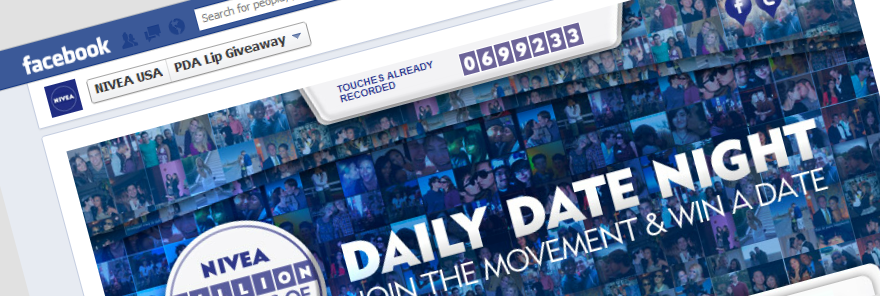on July 25 | in All, Marketing | by Doriane Mouret
Marketing 2.0 was created almost 10 years ago, which might not seem very old to you, but if you think about it, it is equivalent to 70 dog years, and probably 200 tech years. So yes, it’s old. The positive thing about Marketing 2.0 is that if you use it you can be sure you will get some decent results. But you won’t stand out. Because shining requires efforts, creativity and innovation. It requires you to think out of the box and find new ways to surprise your customers. Well, don’t worry, some visionaries are hard at work to rejuvenate marketing practices, and are building what I call Marketing 3.0.
To understand what Marketing 3.0 is, let’s first talk about its older brothers. Marketing 1.0 was simple: a brand displaying a message to a customer. Marketing 2.0 added one dimension: a brand requesting an action from the customer. Marketing 3.0 goes even further: a brand using an external trigger to request an action from the customer that will ultimately create an emotional link between the customer and the brand. Here, a little graphic representation to make it clearer:
 Thus, a typical marketing 1.0 message would be for example “Our product is amazing!”. Translated in a marketing 2.0 strategy, it would look like “Our product is amazing, like us on Facebook!”. While in marketing 3.0, we would have something along the lines of “Our product is on Facebook and we will give $1 to Amnesty International for every new like”. Hence you can differentiate Marketing 3.0 from its older brothers through 4 characteristics: Subtle, Unified, Dynamic and Mobile. Let’s get deeper into details.
Thus, a typical marketing 1.0 message would be for example “Our product is amazing!”. Translated in a marketing 2.0 strategy, it would look like “Our product is amazing, like us on Facebook!”. While in marketing 3.0, we would have something along the lines of “Our product is on Facebook and we will give $1 to Amnesty International for every new like”. Hence you can differentiate Marketing 3.0 from its older brothers through 4 characteristics: Subtle, Unified, Dynamic and Mobile. Let’s get deeper into details.
1. The subtle Call-to-Action
We have known it for a while now, but a recent Nielsen study just confirmed it again: 92% of consumers around the world say they trust earned media, such as word-of-mouth and recommendations from friends and family, above all other forms of advertising. Hence it’s become very challenging to set up advertising campaigns without including a social media strategy. And when I say social media strategy, I’m not limiting it to the basic “Like us on Facebook!” and “Follow us on Twitter”. Marketers, please wake up: that used to be efficient… in 2009. Not anymore.
Today, the secret of an efficient social media strategy remains in our capacity of building subtle Call-to-Actions. The action of liking-following-sharing has become a collateral effect of another intention that has more value to the customer. One of my favorite illustrations of that new trend is the recent “PDA Day” marketing campaign by Nivea. The call to action is to promise that you will give a hug or kiss to someone at least once a week, or a day, etc. The action of sharing on your timeline is just made so that your friends can witness your promise.
Really smart, Nivea! However, why build a Facebook app? Building social campaigns hosted on third party websites will always involve risks in terms of control over the data and analytics. On top of that, we all know that people don’t use Facebook to interact with brands, they use it to talk to their friends. That’s why social apps are dead: now it’s time to do Social by Design.
2. Social Apps are dead, long live the unified world of Social by Design
For a marketer, there is nothing worse than creating call-to-actions that drive your visitors away. Yet that’s exactly what social apps are doing. When you give a “Like us on Facebook” link on your website with an URL redirecting to the Facebook application, you ARE pushing your visitors out of your website. Believe me, as soon as visitors end up on your Facebook page, they won’t see the “Like” button anymore. Instead, they will focus on the little red number in the top navigation bar notifying them about unrelated friend activity… And you’ll lose them immediately as they’ll start wandering around on the social network.
So no, social networks are not optimal for your marketing campaigns, and if you want to start performing better, you need to use another field of Marketing 3.0: Social by Design. Social by Design is when users don’t have to leave your website or application in order to perform social actions such as liking, sharing, following, G+ing, pinning and so on. Yes, it does require a higher skill set in order to integrate such features, but it’s not that complicated. Take this website, for example: if you look at the right side bar, you’ll find a “Follow” and a “Subscribe” buttons. –> Those buttons enable you to follow me on Twitter or subscribe to my Facebook updates without making you leave this page, and they are just simple plugins that I integrated to my CSS file.

But some companies are going much further in the social integration. One of the best examples of social by design is Nike+. Nike was a really early adopter in the field and built its own application with social plugins integrated directly within the app using social APIs. When you are on the Nike+ app, you can share your runs on your Facebook profile, get “Cheers” from your friends, and all that without leaving the app. Take notes!
3. Forget Static, Think Dynamic
People are always impressed by the unknown, the unreleased, the “never done before”. Hence if you want to get their attention, you need to come up with innovative tactics: email marketing, online ads, static landing pages, customized social media pages have all been over done in the marketing 2.0 era and won’t get the level of traction you’d like to get. As technology is becoming accessible to anyone in the world and people get more and more tech savvy, one innovative tactic stands out among others: Interaction. People start knowing how things work. They know how to use a mouse, a keyboard, and they want to interact with a page.
I do, too. So the day I received an envelope from the folks at wefightboredom.com including a card with a URL and a pair of “decoder glasses,” I had to check it out. I typed the URL in my browser, and it brought me to a landing page displaying a closed book. I opened the book by clicking on the front cover and the pages were almost completely blank. But as soon as I put the glasses on, I could see the message. The interactive agency behind this brilliant project is called VLG, and they do many interactive campaigns such as this one. Unified online/offline marketing campaigns, game dynamics, unique user interactions are some of many ways you can stand out in your marketing campaign. Just adding more videos on your website instead of text to improve the level of interaction is already a good step. Think Dynamic.
4. Be Mobile-Ready
The last but not least aspect of Marketing 3.0 is mobility. With a global market that will double in size in 2012 and be worth $20.6 billion by 2015, mobile is THE place to be for advertising according to Gartner. Yet, there are still too many companies out there that don’t provide their visitors with mobile-ready websites, making us have to zoom-in and scroll from left to right in order to be able to read what is on the page with our iPhones/Windows phones/Androids. Today, not having a mobile version of your marketing website and campaigns can hurt the credibility of your product drastically – even if the product itself isn’t mobile.
It doesn’t mean that you have to build a mobile version of your entire website, but make sure to have your homepage, landing pages and contact page/about us optimally set up for mobile. Visitors on-the-go usually want to know who you are, find directions or contacts details, or are just clicking on a link you sent them via email.
 Et voilà! So let’s wrap it up. In order to “refresh” your marketing strategy, try first to be more subtle; make sure to create unified campaigns offering a smooth user experience; don’t forget to make them as interactive as possible; and finally build mobile-ready versions for the main pages of your website. By doing that, you will join the early adopters that are surfing the waves of marketing innovation. When you get there, the next step will be to join the select companies, such as Nivea and Nike, that create the waves of marketing innovation. How so? Well, if you read me often you might already know the answer to this question: Just think out of the box.
Et voilà! So let’s wrap it up. In order to “refresh” your marketing strategy, try first to be more subtle; make sure to create unified campaigns offering a smooth user experience; don’t forget to make them as interactive as possible; and finally build mobile-ready versions for the main pages of your website. By doing that, you will join the early adopters that are surfing the waves of marketing innovation. When you get there, the next step will be to join the select companies, such as Nivea and Nike, that create the waves of marketing innovation. How so? Well, if you read me often you might already know the answer to this question: Just think out of the box.
